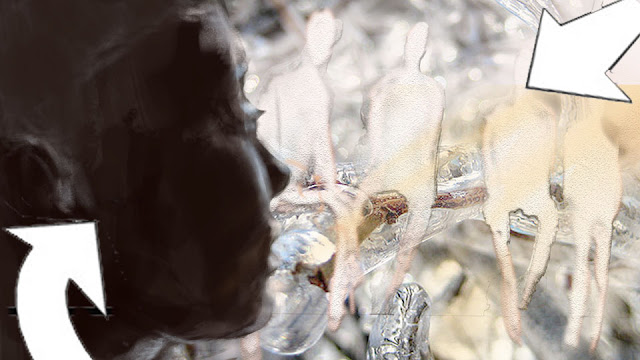Rather than having overlapping UV's or creating multiple sets, I am scaling and repeating the bark texture in Photoshop.
Left: UV map, rotated
Right: UV map taken as a UVsnapshot (found in the drop down menu > polygons in the UV editor interface) - with the bark texture imge imported as a separate layer. scaled down and repeated. I have used the eraser on an airbrush setting, to blur out any hard edges. Each new segment of the texture, when created and copied by pressing (CTRL + ALT) automatically becomes a new layer. Once happy with how the bottom row of texture is looking I can then right click and merge all layers. The second row was a duplicate of the first, but rotated 180 degrees, airbrushed and tweaked to remove any visible hard edges or pattern repeats.
Tree with the new small scale bark image. Next step will be to adjust the UV map and figure out why a portion of the main branch remains smooth
In component mode I am able to select the faces on the geometry, where the texture is looking weird. I can then look at the UV editor and see which part of the map needs to be adjusted. I can use the cut UV tool and then smooth and optimise the map to reduce the distortion....
Using the settings in the UV editor to highlight the distorted areas
Applying a checkered/numbered texture so I can see how the pattern deforms along the branches...whilst the bonus tool was great to get the basic map, I've needed to adjust a couple of areas where the distortion was severe and the scale of the map so tiny that the texture was looking blurred and out of proportion. Whilst time consuming, this will be worth the effort in the long run...





















